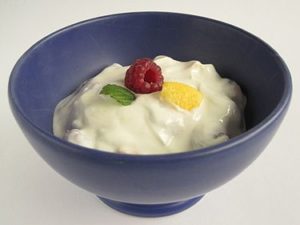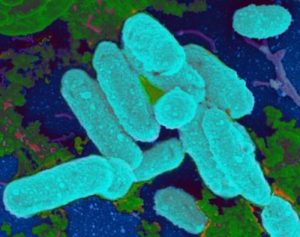After posting yesterday "Probiotic Misconceptions", I was pleasantly surprised that today's NY Times had an article (by Jane Brody) raising similar concerns. What was good is that she wrote about supplements not being regulated. She also left out that probiotic beneficial organisms are found in more than the gut. A case in point being the sinuses - because healthy sinuses also have Lactobacillus sakei (according to the Abreu et al study of 2012), and which has been the basis for my family's successful kimchi treatment for sinusitis (see Sinusitis treatment link for the method). From the NY Times:
Probiotic Logic vs. Gut Feelings
The label on my bottle of Nature’s Bounty Advanced Probiotic 10 says it contains 10 probiotic strains and 20 billion live cultures in each two-capsule dose. The supplement provides “advanced support for digestive and intestinal health” and “healthy immune function.” I have no way to know if any of this is true. Like all over-the-counter dietary supplements, probiotics undergo no premarket screening for safety, effectiveness or even truth in packaging.
To be sure, lay and scientific literature are filled with probiotic promise, and I am hardly the only consumer who has opted to hedge her bets. The global market for probiotic supplements and foods is expected to reach $32.6 billion this year,with a projected annual growth of 20 percent or more.
Beneficial micro-organisms have since been shown to inhabit three main locations in the digestive tract: the stomach, the lower part of the small intestine and the large intestine. To better understand the current enthusiasm for enhancing the body’s supply of these micro-organisms, some definitions are needed.
■ Prebiotics are nondigestible carbohydrates that stimulate the growth and activity of beneficial micro-organisms (that is, probiotics) in the gut. They are found naturally in oats, wheat, some fruits and vegetables (bananas, onions, garlic, leeks, asparagus, soybeans, honey and artichokes), and in breast milk, and they are added to some infant formulas.
■ Probiotics are defined by the World Health Organization as “live micro-organisms which when administered in adequate amounts confer a health benefit on the host.” The ailments that probiotics are said to benefit range from infection-caused diarrhea, inflammatory bowel diseases and irritable bowel syndrome to asthma, allergy and Type 1 diabetes.
■ Synbiotics are a combination of prebiotics and probiotics. They are found in so-called functional foods like yogurt and kefir, fermented foods like pickles and some cheeses, and in some supplements.
That probiotic organisms are important to health is not questioned. As researchers at the Institute for Immunology at the University of California,Irvine have written intestinal micro-organisms play “an important role in the development of the gut immune system, digestion of food, production of short-chain fatty acids and essential vitamins, and resistance to colonization from pathogenic microorganisms.”
Dr. Walker has explained that probiotics enhance defensive action by the cells that line the gut. When a person takes antibiotics, especially the broad-spectrum antibiotics most often prescribed, many of these beneficial microbes are destroyed along with the disease-causing bacteria. Patients on antibiotics are often told to consume yogurt with active cultures to replenish the beneficial organisms.
In an extensive review of the evidence published in 2010 in the journal Pediatrics, an expert committee concluded that probiotics might limit the course of virus-caused diarrhea in otherwise healthy infants and children. But the committee said there was not sufficient evidence to justify routine use of probiotics to prevent rotavirus-caused diarrhea in child care centers. Nor did the committee endorse taking probiotics during pregnancy and nursing or giving them to infants to prevent allergic disorders in those at risk.
Only a small percentage of probiotic foods and supplements have the backing of peer-reviewed published research. They include Dannon’s Activia yogurt and DanActive drink and the supplements Culturelle and Align. Although kefir contains even more probiotic strains than yogurt, clinical studies have not shown it to be effective in preventing or treating infectious diarrhea.
The challenge in taking probiotics is to get the microbes past the stomach, where most are killed by gastric acid, said Robert Dunn, a biologist at North Carolina State University. Once in the intestines, they must compete effectively with the microbes already present.
Dr. Dunn, author of "The Wild Life of Our Bodies," says there is good reason to remain skeptical of probiotics. “There are hundreds of kinds of prebiotics and probiotics in stores,” he said. “As a consumer, it’s almost impossible to figure out what is best. What are the specific species in your intestines, and how will what you take compete with them?” Still, he added, taking them doesn’t seem harmful.
There is growing evidence for the role of the appendix in restoring a healthful balance of microbes in the body. Though long considered an expendable, vestigial organ, the appendix is now being looked at as “a storehouse of good bacteria,” Dr. Dunn said. In a study of recovery rates from Clostridium difficile, which causes a severe form of infectious diarrhea, often following antibiotic therapy, patients whose appendixes had been removed were more likely to have a recurrent infection than those who still had appendixes.

 Even though it looks to be a modest effect, it is still good news. But they should have added kefir to the list of probiotic containing foods. From Science Daily:
Even though it looks to be a modest effect, it is still good news. But they should have added kefir to the list of probiotic containing foods. From Science Daily: Even though this study was done in a laboratory, it gives further support for the treatment of sinusitis with bacteria and other microbes. And it could help explain why repeated courses of antibiotics don't "cure" many chronic infections - because biofilms filled with pathogenic bacteria are signs of microbial communities out-of-whack. Which is why my family's successful chronic sinusitis treatment with kimchi (juice) containing Lactobacillus sakei is all the more impressive. From Science Daily:
Even though this study was done in a laboratory, it gives further support for the treatment of sinusitis with bacteria and other microbes. And it could help explain why repeated courses of antibiotics don't "cure" many chronic infections - because biofilms filled with pathogenic bacteria are signs of microbial communities out-of-whack. Which is why my family's successful chronic sinusitis treatment with kimchi (juice) containing Lactobacillus sakei is all the more impressive. From Science Daily: